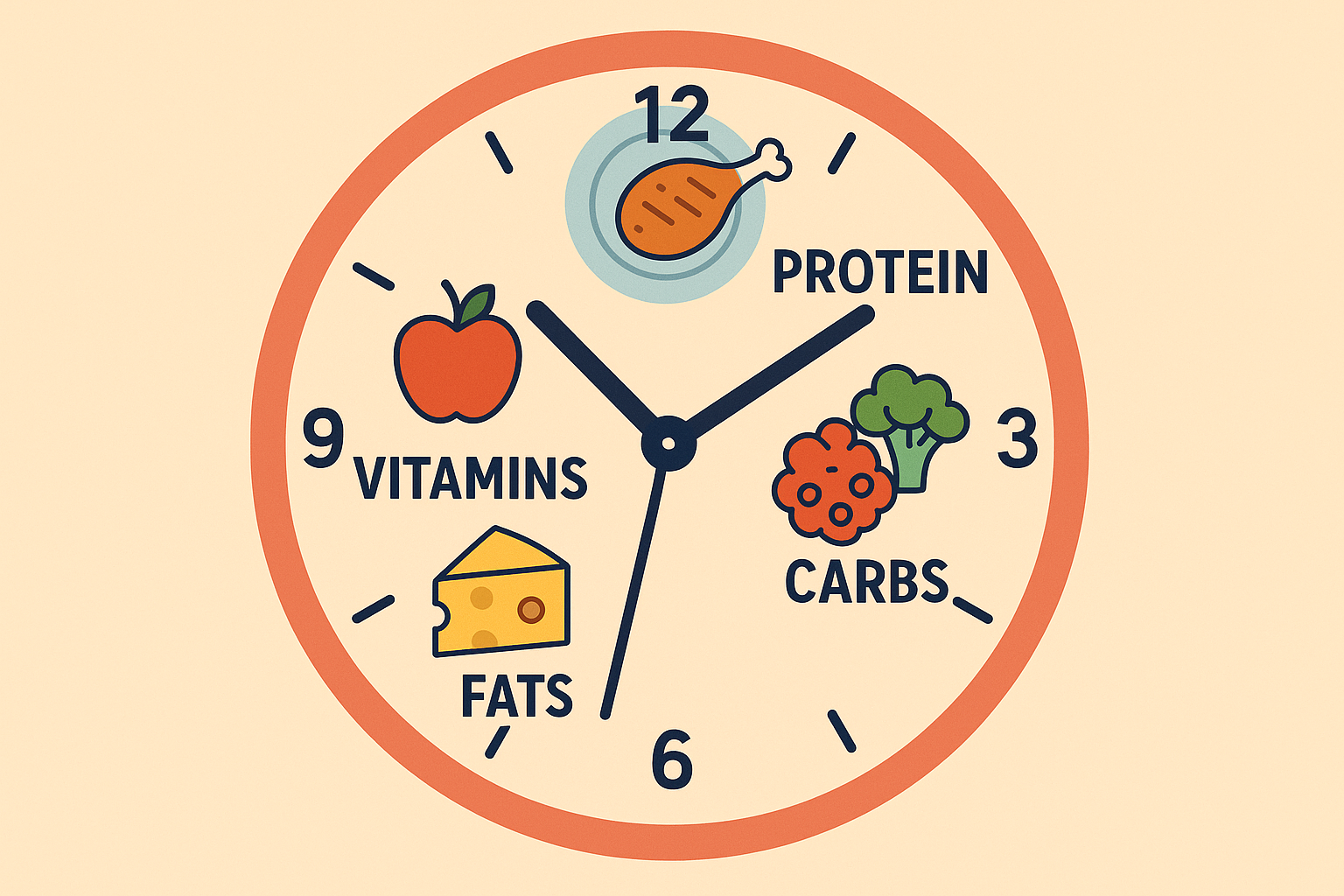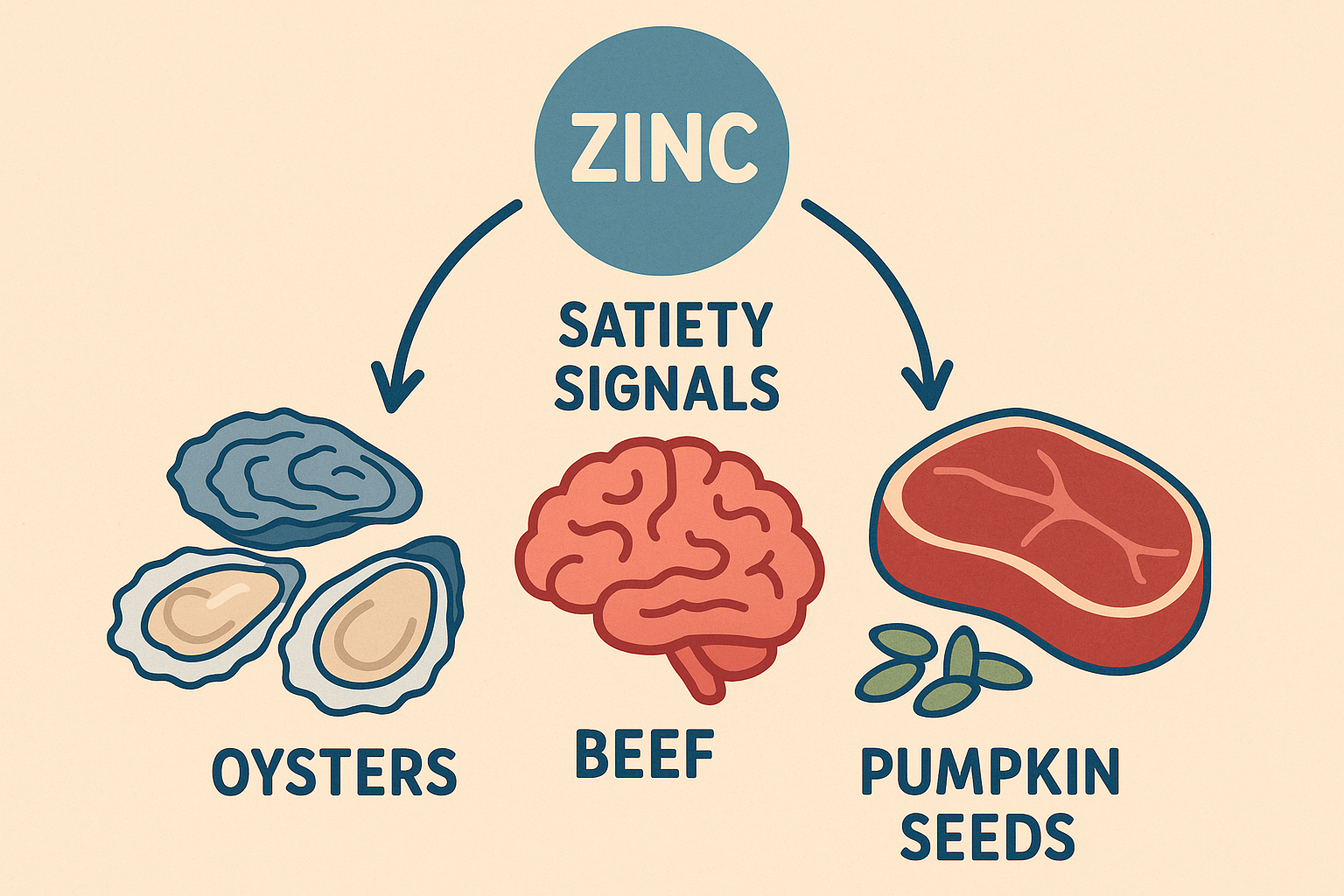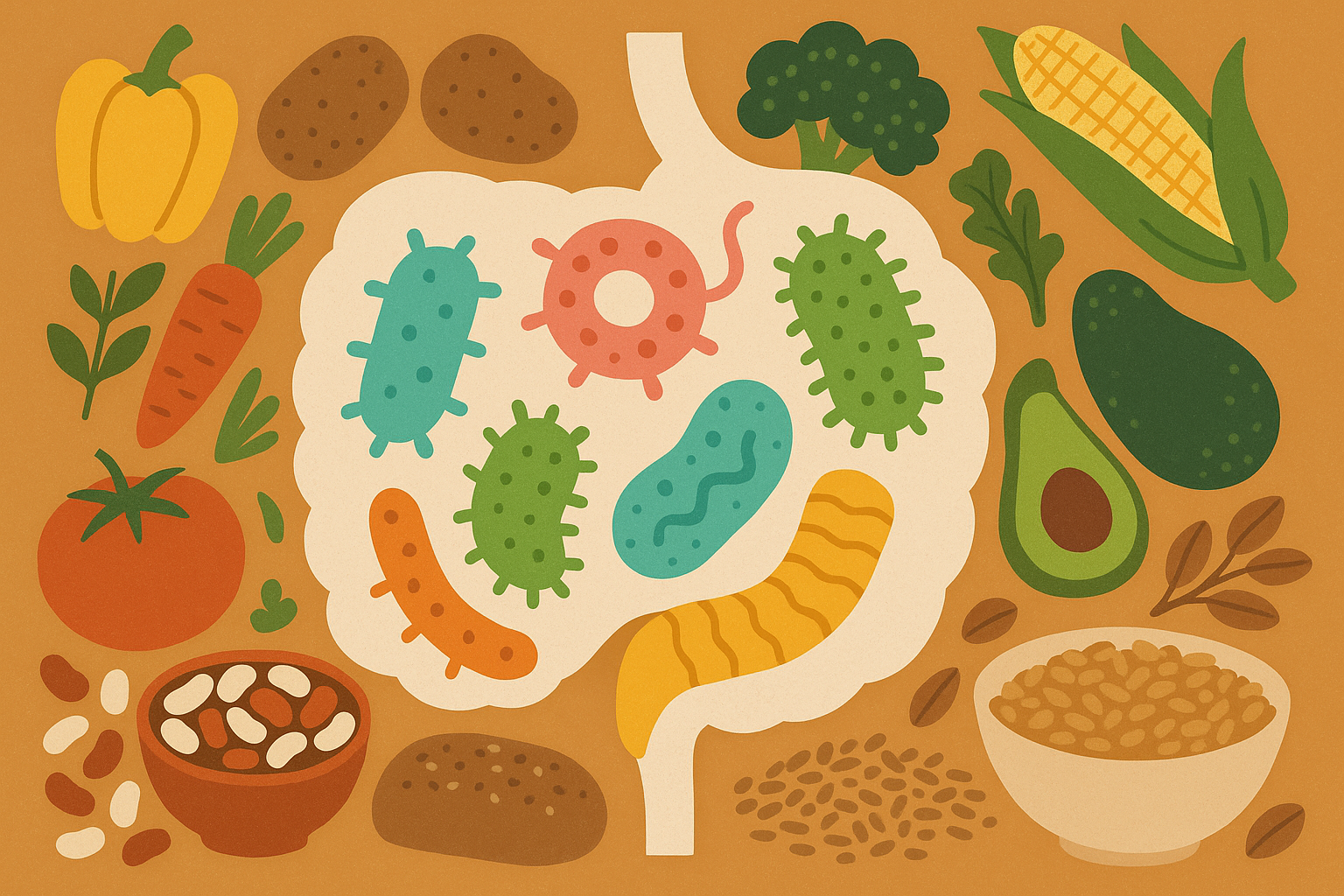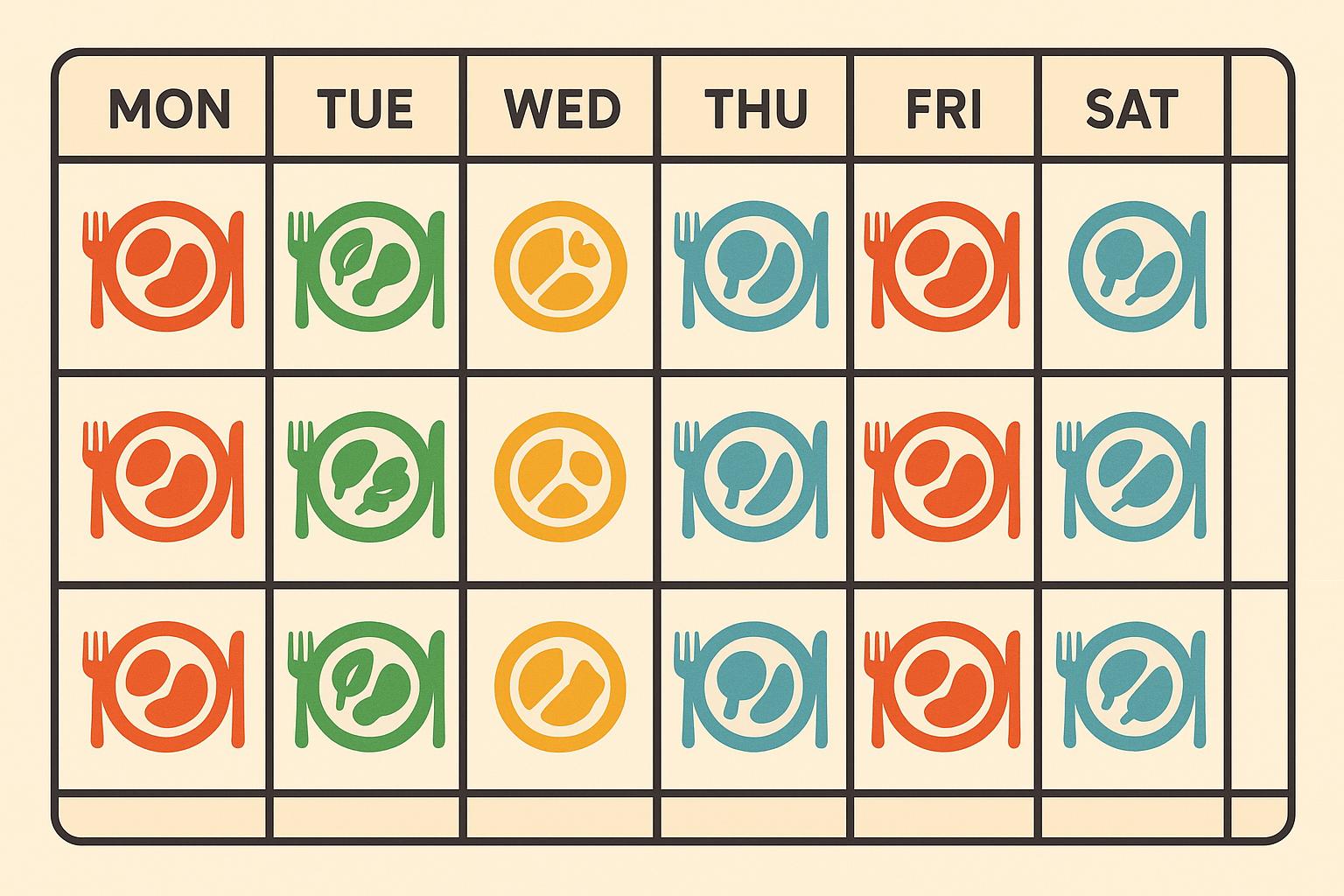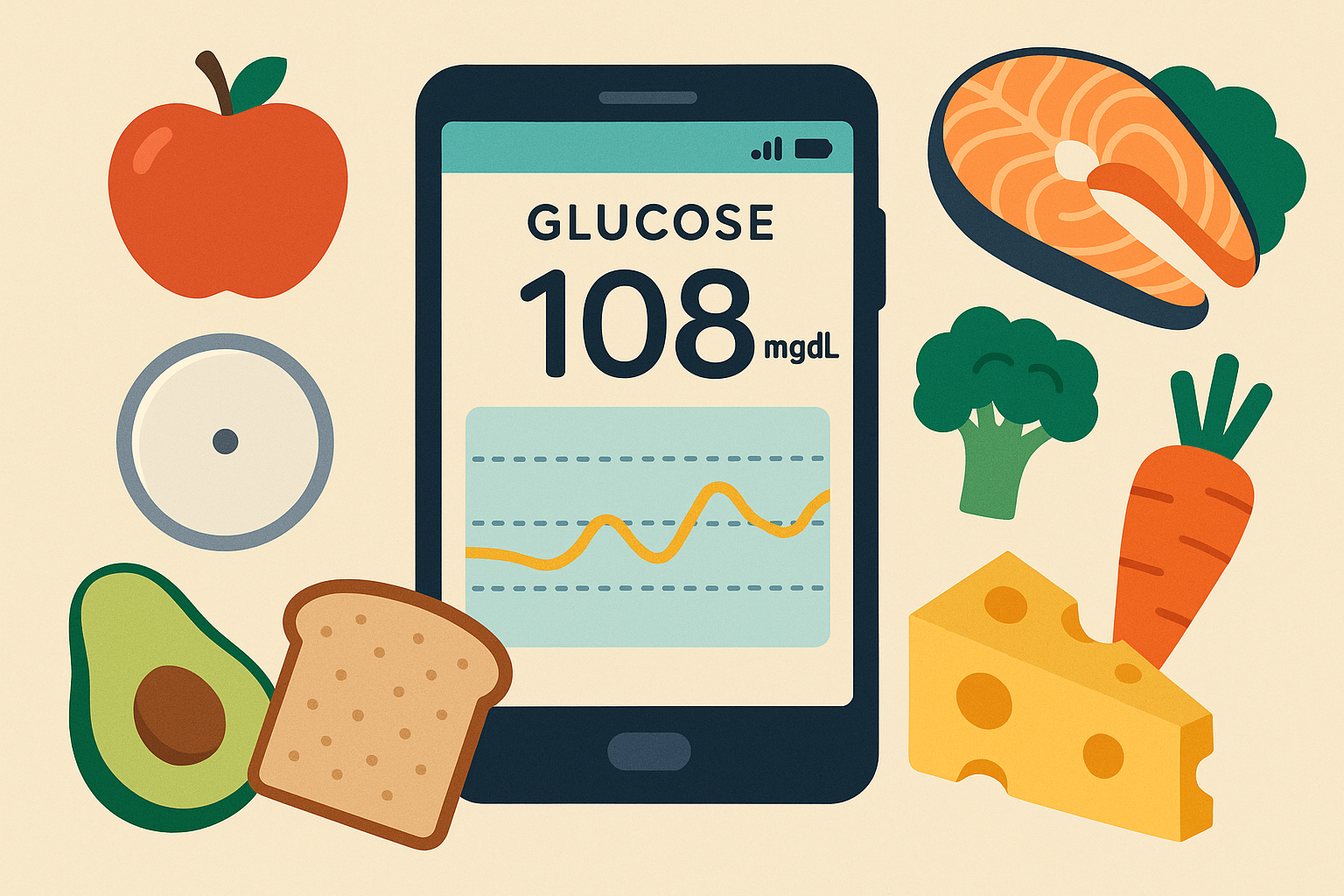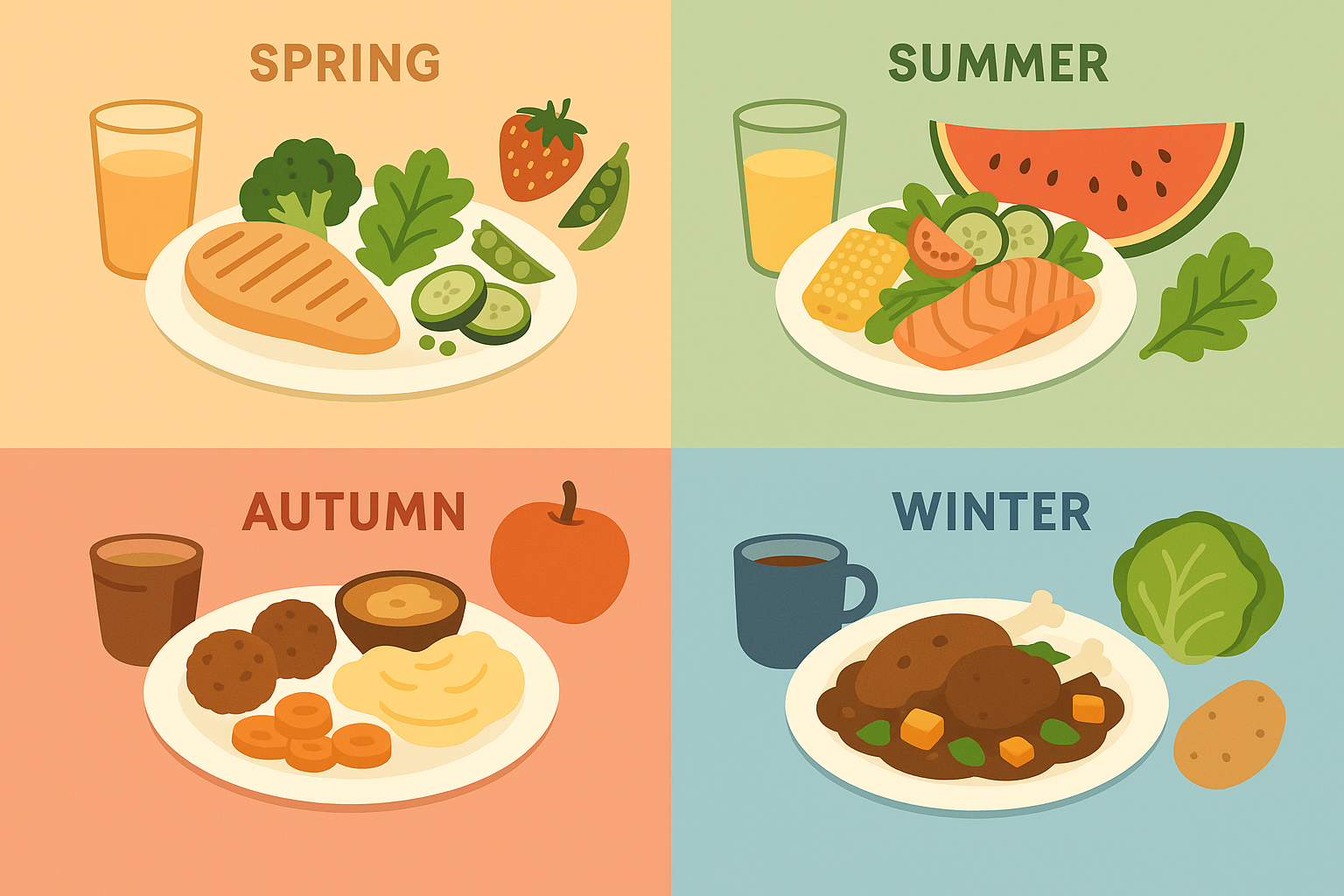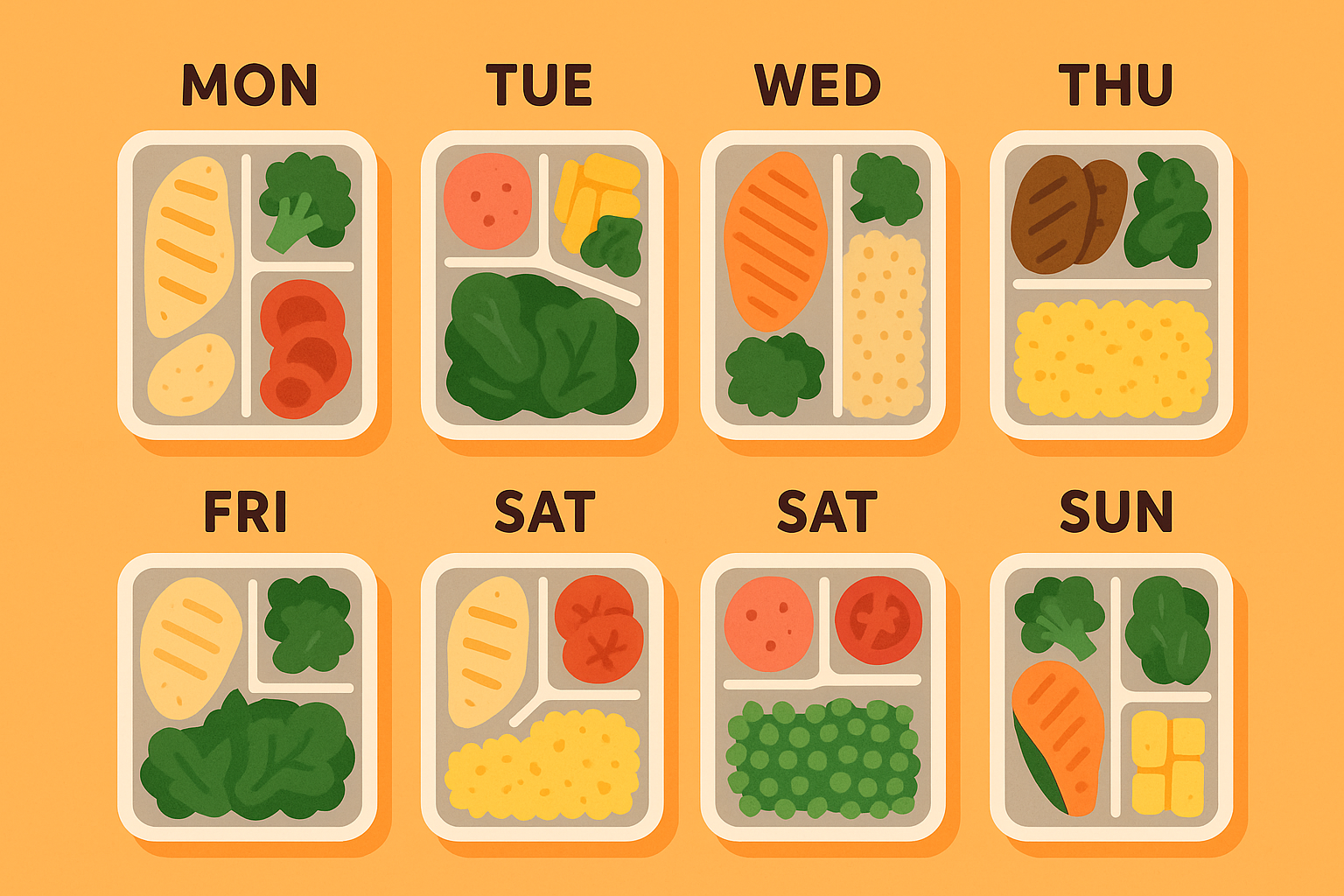Your 2500 Calorie Meal Plan Is Probably Wrong (Here’s What Actually Works)

I used to be that person meal prepping identical chicken and rice containers every Sunday, wondering why I’d be ravenous by Wednesday and ordering pizza by Friday. Most people (myself included for way too long) focus entirely on what they’re eating in their 2500 calorie meal plan while completely ignoring when they eat it. Here’s what I’ve noticed (and what the research backs up): if you’re pretty active, you might lose about half a pound to a pound weekly on 2500 calories. But if you’re more of a couch person like I used to be, you could actually gain 1-2 pounds – proving that the same calorie target creates drastically different outcomes depending on individual factors.
Your body basically has different “moods” throughout the day. In the morning, it’s like “bring on the carbs!” But by evening, it’s more like “please, just give me some protein and call it a night.”
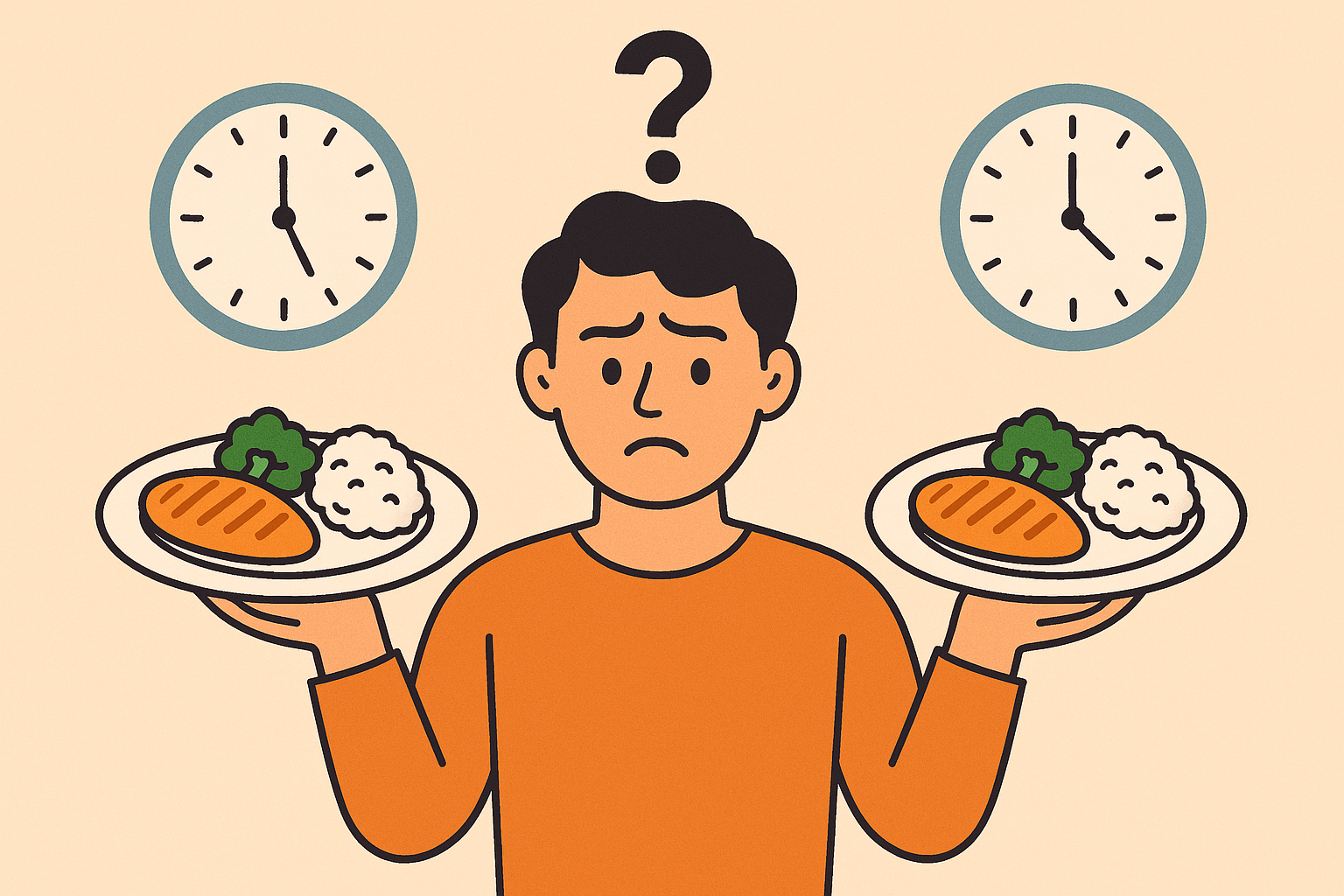
Table of Contents
- When Your Body Actually Wants Food: Timing That Changes Everything
- The Hidden Reason You’re Still Hungry After 2500 Calories
- Why Static Meal Plans Fail (And What to Do Instead)
- Your Personal Metabolic Blueprint: Beyond One-Size-Fits-All
TL;DR
- Your metabolism is like a moody teenager – it changes throughout the day. Timing your carbs and proteins around these natural rhythms can make or break your 2500 calorie meal plan
- Still hungry after eating plenty? It’s probably not willpower – you might be missing key minerals that tell your brain you’re actually full
- Eating exactly 2500 calories every day actually works against you. Mixing it up between 2200-2800 calories keeps your metabolism from getting too comfortable
- Your genes determine whether you thrive on lots of carbs or just a little – cookie-cutter meal plans ignore this completely
- Fancy tracking devices help, but honestly, just noticing how you feel after meals beats guesswork most of the time
When Your Body Actually Wants Food: Timing That Changes Everything
I spent years obsessing over hitting my 2500 calorie targets while completely missing the bigger picture. Think of your body like a campfire – it burns different types of fuel better at different times. Understanding these patterns and timing your meals accordingly can be the difference between constantly thinking about food and feeling satisfied on the same number of 2500 calories.
Your Morning Metabolic Sweet Spot
Between 6-10 AM, your body is basically a carb-processing machine. This is when your insulin sensitivity peaks – fancy talk for “your body can handle way more carbs without storing them as fat or making you crash later.” This window is your best shot at front-loading carbs while keeping your energy steady all day.
Loading Up When It Counts Most
During this morning window, you can eat about 35-40% of your daily carbs (roughly 220-250g in a 2500 calorie plan) without the drama that would happen later in the day. The trick is pairing these carbs with protein and healthy fats so you get sustained energy instead of that “I feel great… oh wait, now I’m crashing” roller coaster.
For those looking to nail their morning carb game, understanding how to prepare nutrient-dense oats can give you the perfect foundation for your 2500 calorie meal structure.
Sarah, a 28-year-old marketing manager, was dealing with those brutal 3 PM energy crashes until she tried something different. She moved most of her daily carbs (250g) to breakfast and mid-morning – steel-cut oats with berries and Greek yogurt at 7 AM, then a banana with almond butter at 10 AM. This simple timing shift killed her afternoon crashes and cut her evening cravings by 70%. Same calories, completely different results.
Evening Insulin Resistance Reality
After 6 PM, your body starts getting ready for sleep and basically becomes resistant to carbs. The same bowl of pasta that energized you at breakfast could now get stored as fat and mess with your sleep. I learned this the hard way after months of wondering why my late dinners left me feeling sluggish the next morning.
Flipping the Script at Night
Evening meals should do the opposite of breakfast – focus on protein and healthy fats while keeping carbs to just 15-20% of your daily intake. Load up on leafy greens and other non-starchy vegetables to get your nutrients without overloading your system when it can’t handle them efficiently.
Look, you don’t need to become a macro-counting robot. The basic idea is: eat more carbs when you wake up (your body can handle them), and switch to more protein and fat as the day goes on.
| Time Window | What to Focus On | Good Food Choices | What Your Body’s Doing |
|---|---|---|---|
| 6-10 AM | Carbs are your friend | Oats, berries, Greek yogurt | Ready to process carbs like a champ |
| 10 AM-2 PM | Balanced approach | Quinoa, chicken, avocado | Still handling carbs pretty well |
| 2-6 PM | Start shifting to protein | Sweet potato, salmon, nuts | Getting pickier about carbs |
| 6-10 PM | Keep it simple | Leafy greens, lean meat, olive oil | “Please no more carbs” mode |
Working With Your Body’s Schedule Instead of Against It
Your body produces different hormones at specific times throughout the day, and these directly impact how you process food. When you work with these natural patterns instead of fighting them, maintaining 2500 calories stops feeling like a restriction and starts feeling like fuel.
Making Friends with Morning Cortisol
Your cortisol naturally peaks in the morning to help you wake up, but it also affects blood sugar. I’ve found that eating within 2 hours of waking helps keep this stable. When I skip breakfast or wait too long, I’m guaranteed to crash around 11 AM.
Supporting Your Body’s Nighttime Repair Mode
Your body releases growth hormone during deep sleep for recovery and repair, and your evening meal choices directly impact this process. Eating your last meal 3-4 hours before bed gives your digestive system time to chill out without messing with this natural recovery cycle. This timing also prevents those middle-of-the-night blood sugar dips that can wake you up.
The Hidden Reason You’re Still Hungry After 2500 Calories
Ever notice how you can eat a huge meal and still want to raid the pantry an hour later? Sometimes that’s not willpower – your body might just be missing some key nutrients and keeps asking for more food until it gets them. Traditional meal planning focuses on hitting calorie and macro targets while completely ignoring whether you’re actually getting the minerals and vitamins your body needs to feel satisfied. This explains why some people feel great on 2500 calorie diet plans while others are constantly battling cravings.
The Minerals That Actually Control Your Appetite
Specific mineral deficiencies can trigger persistent hunger signals that completely derail any eating plan. Your body basically prioritizes getting these essential minerals over everything else, which means if you’re not getting them, you’ll keep feeling hungry no matter how many calories you eat.
The Zinc Thing You Need to Know About
Zinc deficiency messes with leptin – the hormone that tells your brain “hey, we’re full now.” Without enough zinc, your satiety signals just don’t work right, making it nearly impossible to feel satisfied regardless of how much you eat. This one mineral issue can sabotage any meal plan.
You want about 15-20mg of zinc daily through foods like oysters, grass-fed beef, or pumpkin seeds. Here’s the annoying part though – zinc fights with calcium and iron for absorption, so timing matters. I try to separate my zinc-rich foods from dairy and iron supplements by at least two hours.
The real test? Notice how hungry you feel 2-3 hours after meals. If you’re still thinking about food despite eating plenty of calories, zinc deficiency might be the culprit.
Why Magnesium Matters for Blood Sugar
Magnesium deficiency can reduce how well your body handles sugar by up to 25%, creating blood sugar roller coasters that drive cravings and hunger regardless of how much you’ve eaten. When your cells can’t use glucose efficiently, your body thinks it’s starving and triggers powerful hunger signals even when you’ve had plenty of food.
The research from Bodybuilding.com shows that “a gram of carbohydrate has 4 calories, one gram of protein has 4, and one gram of fat has 9” – but magnesium deficiency can prevent your cells from actually using these macronutrients efficiently, regardless of perfect ratios.
I aim for 400-500mg of magnesium daily through dark leafy greens, nuts, and seeds. The difference in blood sugar stability becomes pretty obvious within a week of consistent intake.
Plant Compounds That Naturally Kill Cravings
Specific compounds found in plants can trigger satiety pathways that work independently of calories, making sticking to 2500 calories feel effortless rather than like a constant battle. These work through multiple pathways to reduce hunger hormones and increase satisfaction signals.
How Certain Plant Compounds Fight Hunger Hormones
Some plant compounds directly suppress ghrelin – your primary hunger hormone. When ghrelin levels stay low, you just don’t experience those intense hunger pangs that usually derail meal plans. The effect can last 4-6 hours after eating, giving you sustained appetite control throughout the day.
Here’s a cool example: volunteers following the NiMe diet from Papua New Guinea “lost 1.4 per cent of their body weight over three weeks… despite participants eating the same number of calories as they usually would (around 2,500 calories for men and 2,000 for women)” according to The Telegraph. The secret wasn’t eating less – it was the 45g of daily fiber from whole plant foods that naturally suppressed hunger hormones.
Understanding how digestive health connects to appetite regulation becomes pretty important when you’re trying to work more fiber into your 2500 calorie framework.
Your Gut Bacteria’s Role in Feeling Full
Different types of fiber feed different beneficial bacteria in your gut, which then produce compounds that tell your brain you’ve had enough food. This isn’t just about feeling physically full – it’s about your brain getting clear chemical signals that you’re satisfied.
I try to get 45-50g of varied fiber sources daily, but here’s what most people miss – you need to rotate fiber types weekly to keep your gut bacteria diverse. Different bacteria thrive on different fiber sources, so eating the same high-fiber foods every day actually reduces the benefits over time.
The timing trick? Eat your high-fiber foods 30 minutes before main courses. This gives the fiber time to start working on your hunger hormones before you dive into the calorie-dense parts of your meal.
Why Static Meal Plans Fail (And What to Do Instead)
Here’s something that took me way too long to figure out: eating exactly 2500 calories every single day actually works against your metabolism. Think of your metabolism like a campfire – if you feed it the exact same amount of wood every day, it gets really efficient at burning just that amount. But if you sometimes give it more kindling, sometimes bigger logs, it stays active and burns hot.
Your body is incredibly smart and quickly adapts to whatever you consistently do. This metabolic adaptation reduces your energy expenditure and makes weight management increasingly difficult over time. Mixing things up prevents this adaptation while keeping your 2500-calorie average.
Smart Calorie Cycling That Actually Works
Instead of rigid daily targets, cycling between 2200-2800 calories based on your activity levels, stress, and how you’re feeling prevents your metabolism from getting too comfortable while maintaining your 2500-calorie average. This keeps your metabolism flexible and efficient.
High-Energy Days Need More Fuel
On days when you’re training hard or dealing with high stress, bumping calories up to 2700-2800 supports recovery and performance while teaching your body that food isn’t scarce. This prevents the metabolic slowdown that happens when your body thinks it’s in chronic restriction mode.
I track my training intensity using heart rate variability (when I remember to check it) or just honest perceived exertion. If I’m hitting it hard in the gym or dealing with a stressful work deadline, I eat more accordingly.
Mark, a 35-year-old software engineer who lifts weights 4 times per week, was stuck in a six-month plateau until he started cycling his calories. On heavy lifting days (Monday, Wednesday, Friday), he eats 2750 calories with extra carbs for recovery. On rest days (Tuesday, Thursday), he drops to 2300 calories focusing on protein and fats. Weekends average 2450 calories. This simple weekly cycling broke through his plateau completely.
If you’re thinking about adding intermittent f asting to your calorie cycling, learning about proper fasting protocols for metabolic flexibility can help you get the most out of your 2500 calorie meal plan variations.
Rest Days and Recovery
On rest days or during active recovery periods, dropping calories to 2200-2300 maintains your weekly balance while teaching your body to efficiently use stored energy. This creates metabolic flexibility – basically your body gets good at switching between burning food and burning stored fat for fuel.
My weekly approach looks like this: I track my training intensity and adjust daily calories within a 200-300 calorie range based on activity, but I always maintain that weekly average of 2500 calories across seven days. It’s not about restriction – it’s about matching fuel to demand.
Mixing Up Your Macros Too
Just like calorie cycling prevents metabolic staleness, cycling your macronutrient ratios while maintaining 2500 calories helps with body composition changes and prevents your body from becoming too efficient at processing any single pattern. This maintains metabolic flexibility across all energy systems.
| Day Type | Calories | What to Focus On | Best For |
|---|---|---|---|
| High Intensity | 2750 | More carbs for fuel | Heavy training days |
| Moderate Activity | 2500 | Balanced approach | Regular workouts, work days |
| Active Recovery | 2300 | More protein and fat | Light movement, stress recovery |
| Rest Day | 2200 | Higher protein, lower carbs | Complete rest, meal prep |
Strategic Carb Cycling Made Simple
Alternating between higher carb days (40-45% of calories) and moderate carb days (25-30%) keeps your body responsive to carbs while supporting performance when you need it most. Higher carb days align with intense training, while moderate days support fat burning.
Understanding your individual carb tolerance levels becomes pretty important when you’re implementing this cycling within your 2500 calorie framework.
Protein Cycling for Muscle Building
Varying protein intake between 1.2-1.8g per kg of body weight optimizes muscle building without overloading your digestive system. Higher protein days support recovery after intense training, while moderate protein days give your digestive system a break.
According to Hey Wellness, “protein requirements for a 2500-calorie diet range from 125g to 188g daily, depending on your activity level and fitness goals” – which supports this cycling approach rather than hitting the same target every day.
Fat Cycling Days
Strategic higher fat days (40-45% of calories) train your body to efficiently burn stored fat for fuel, which becomes crucial during lower calorie periods or extended periods between meals. I typically schedule higher fat days on rest days or during periods of lower carbohydrate intake. Your body becomes remarkably good at switching between fuel sources when you give it regular practice.
Your Personal Metabolic Blueprint: Beyond One-Size-Fits-All
Here’s the thing that really frustrated me when I started: generic 2500-calorie meal plans completely ignore the massive differences in how people process food. Some people can eat pasta all day and feel amazing, while others (like me) turn into sluggish zombies after a big bowl of spaghetti. These aren’t minor differences – they can determine whether you thrive on lots of carbs or need to keep them minimal within your 2500-calorie framework.
Your Genes Determine Your Ideal Macros
You don’t need expensive genetic testing to figure this out, but specific genetic variants do influence how efficiently you process carbs, metabolize fats, and use proteins. These differences can determine whether you feel amazing on 25% or 50% carbohydrates within your 2500-calorie plan.
Figuring Out Your Carb Tolerance
Some people produce tons of the enzyme that breaks down carbs, while others make very little. People with high enzyme production can efficiently handle 45-50% carbohydrates, while those with lower production do better with 25-30% carb ratios.
You don’t need a genetic test to figure this out though. I monitor how I feel after different carb loads and adjust based on my energy levels and how I feel 2 hours after eating. If you’re consistently feeling tired or cranky after carb-heavy meals, you probably need fewer carbs regardless of what generic meal plans recommend.
Fat Processing Differences
Some people feel more satisfied and maintain better energy on higher fat intakes, while others do better with moderate fat and higher carbs. It’s pretty individual.
Inflammation Response Variations
Some people can handle higher saturated fat intakes without any issues, while others need to focus mainly on unsaturated fats to avoid inflammatory responses. Again, this is where paying attention to how you feel becomes more valuable than following generic recommendations.
Real-Time Feedback Beats Guesswork
Rather than following theoretical meal plans, using simple feedback methods allows you to adjust your 2500 calories approach based on your body’s actual responses. This eliminates guesswork and creates truly personalized nutrition strategies.
Glucose Response Tracking
Sure, a continuous glucose monitor is cool, but you can also just notice how you feel 2 hours after eating different foods. Tired and cranky? That meal probably wasn’t great for your blood sugar. Still energetic? Winner.
I wore a continuous glucose monitor for about a month while dialing in my meal plan. The data was eye-opening – foods I thought were “healthy” were causing glucose spikes above 140 mg/dL, while some foods I’d been avoiding actually kept my glucose stable.
The process is pretty straightforward: notice which foods make you feel awful, adjust portion sizes or meal timing to keep your energy steady, then create your personal “foods that work for me” list based on how you actually respond rather than what you think you should eat.
Heart Rate Variability for Meal Timing
HRV data shows your nervous system’s recovery state, which directly impacts how well you process food. When your HRV indicates high stress or poor recovery, your body handles nutrients differently and might benefit from different meal timing.
My daily approach is simple: check HRV when I wake up. If it’s way below my baseline, I delay my first meal by 2-3 hours to give my system more recovery time. If HRV is normal or good, I follow my standard meal timing. I also check afternoon HRV to adjust evening meal size based on how well my body is handling the day’s stress.
This transforms your relationship with food from following rigid rules to responding intelligently to what your body actually needs. When you work with your physiology rather than against it, maintaining 2500 calories becomes sustainable rather than a constant battle.
The trend toward personalized nutrition is even showing up in fast food. As “Eat This, Not That” reports, many chains now offer customizable options where “if you’re eating 2,500 calories a day, that would be 400 calories from protein… divided into 20 to 30 grams for each of your main meals” – showing how even quick-service restaurants are acknowledging individual nutritional needs.
Simple Ketone Monitoring
Measuring ketone levels helps you optimize fat-burning windows within your 2500-calorie cycling approach. When ketones are present, it means your body is efficiently accessing stored fat for fuel, which is especially valuable during lower-calorie cycling days.
I use simple urine strips (blood ketone meters are more accurate if you want to get serious). The goal isn’t to stay in ketosis constantly, but to know when your body has successfully shifted into fat-burning mode during your cycling periods.
Beyond Basic Monitoring
Additional biomarkers can fine-tune your 2500 calorie meal plan for better results, but honestly, most people don’t need to get this detailed unless they’re really struggling.
Inflammation Tracking
Chronic inflammation can mess with hunger hormones and metabolic efficiency, making it harder to feel satisfied on any calorie level. Simple inflammatory markers can guide food choices within your 2500-calorie diet framework, helping you identify which foods help or hurt your goals.
Thyroid Function Considerations
Your thyroid directly controls metabolic rate, and certain foods or meal timing patterns can support or suppress thyroid function. Understanding how your meal plan affects thyroid markers helps ensure your 2500-calorie diet intake matches your actual metabolic needs.
The importance of individualized approaches becomes clear when you consider that research shows “individual factors like activity level, metabolism, age, and medical conditions significantly impact how the body responds to a 2500-calorie diet plan” – making one-size-fits-all approaches pretty much useless.
Supporting thyroid function through nutrition often involves understanding key micronutrients like sulforaphane that can optimize metabolic function within your 2500 calorie structure.
Seasonal and Hormonal Considerations
Your nutritional needs change throughout the year and across hormonal cycles. Seasonal changes in daylight, activity levels, and available foods naturally influence optimal macronutrient ratios and meal timing within your 2500 calories framework.
Seasonal Adjustments
Longer summer days with extended daylight naturally shift your circadian rhythms, potentially changing optimal meal timing and carb tolerance. Winter’s shorter days may require different macronutrient ratios to support mood and energy levels while maintaining your caloric targets.
Hormonal Cycle Considerations
For women, hormonal fluctuations throughout the menstrual cycle significantly impact insulin sensitivity, cravings, and optimal macronutrient ratios. Adjusting your 2500 calories meal plan to work with these natural hormonal shifts rather than against them improves both results and how you feel.
During the first half of the cycle, higher carb tolerance often allows for 40-45% carbs, while the second half may require shifting toward 30-35% carbs with increased healthy fats to support hormone production and reduce cravings.
Stress and Meal Plan Adaptation
Chronic stress fundamentally changes how your body processes food, often requiring adjustments to your 2500 calories approach. High stress can increase insulin resistance, mess with appetite hormones, and change optimal meal timing patterns.
Stress-Responsive Meal Timing
When you’re dealing with chronic stress, your natural cortisol rhythm may be disrupted, requiring different meal timing strategies. Some people benefit from earlier dinner times to support cortisol normalization, while others need strategic late-evening protein to prevent middle-of-the-night cortisol spikes.
Stress-Fighting Foods
Certain foods and nutrients can help your body handle stress better within your 2500 calories framework. Strategic inclusion of these compounds through whole foods can improve how your body handles both dietary and lifestyle stressors.
Digestive Health Reality Check
Even the most perfectly planned 2500 calories meal plan fails if your digestive system can’t properly break down and absorb the nutrients. Digestive health directly impacts satiety signals, nutrient utilization, and metabolic efficiency.
Stomach Acid and Protein Digestion
Low stomach acid (surprisingly common, especially with age) can prevent proper protein digestion, leading to amino acid deficiencies that trigger continued hunger despite adequate calories. Supporting healthy stomach acid levels often resolves persistent hunger issues.
Bile Production and Fat Absorption
Poor bile production can prevent proper fat digestion and absorption of fat-soluble vitamins, creating nutrient deficiencies that drive continued eating. Supporting healthy bile function is especially important when following higher-fat cycling days.
Jessica, a 42-year-old teacher, couldn’t understand why she felt constantly hungry on her 2500 calories meal plan until she addressed her digestive health. After adding digestive enzymes with meals and incorporating bitter greens to stimulate bile production, her post-meal satisfaction improved dramatically. She went from thinking about food every 2 hours to feeling satisfied for 4-5 hours between meals, without changing her caloric intake.
Real-World Implementation
Your meal plan doesn’t exist in a vacuum – environmental factors, sleep quality, exercise timing, and social situations all impact how well your 2500 calories approach works in real life. Building flexibility ensures long-term success.
Sleep Quality Impact
Poor sleep messes with hunger hormones, reduces insulin sensitivity, and can completely derail even the most well-designed meal plan. Optimizing sleep often has a bigger impact on meal plan success than perfect macronutrient ratios.
Exercise Timing Strategy
When you exercise relative to your meals significantly impacts how those nutrients get used – whether they go toward muscle building and recovery or get stored as fat. Strategic exercise timing can maximize the benefits of your 2500 calories intake.
Post-workout meals within 2-3 hours get preferentially used for muscle recovery rather than fat storage, regardless of the time of day. This creates opportunities to include higher-carb meals later in the day if they align with your training schedule.
Social and Practical Reality
The most scientifically perfect meal plan fails if it doesn’t fit into your actual life. Building social flexibility, meal prep strategies, and restaurant navigation skills ensures your 2500 calories approach works in real-world situations rather than just on paper.
Restaurant and Social Eating
Social eating situations don’t have to derail your meal plan if you have flexible strategies that maintain your overall 2500 calories balance while allowing for enjoyment and social connection. The key is planning ahead and making strategic choices rather than throwing in the towel completely.
Smart Meal Prep
Traditional meal prep involves making identical meals for the entire week, which works against the metabolic flexibility principles outlined here. Smart meal prep involves preparing components that can be combined differently based on your daily needs and cycling patterns.
I prep proteins, vegetables, and carb sources separately, then combine them in different ratios based on whether it’s a high-intensity training day, rest day, or somewhere in between. This maintains the cycling benefits while still having convenient, ready-to-eat options.
The beauty of this personalized approach is that it grows with you. As you learn more about your individual responses and refine your strategies, your 2500 calories framework becomes increasingly effective and sustainable. You’re not following someone else’s meal plan – you’re developing your own based on real data from your unique physiology.
I get it – you’re reading this thinking “Great, now I need to track my glucose, monitor my HRV, cycle my macros, AND figure out my genetic variants?” Nope. Pick ONE thing that sounds doable. I started with just eating breakfast within 2 hours of waking up. That’s it.
The key insight here is that 2500 calories isn’t just a number to hit – it’s a framework that needs to be intelligently distributed, timed, and customized based on your unique metabolic signature. Every calorie should serve a specific purpose rather than just filling a mathematical requirement.
For those looking to optimize their nutrient absorption and support their personalized meal planning approach, understanding bioavailable collagen supplements can complement this strategic nutrition framework. Their focus on absorption and utilization aligns perfectly with the precision approach outlined here – because getting nutrients into your system is only half the battle; your body actually needs to use them effectively.
Ready to move beyond generic meal plans? Start with one element – maybe just timing your carbs better or paying attention to how different foods make you feel – and build your personalized approach from there.
Final Thoughts
Most 2500 calorie meal plans treat your body like a simple calculator – calories in, calories out, done. But your metabolism is way more sophisticated than that, with different systems operating at different times throughout the day. When you learn to work with these systems instead of fighting against them, maintaining 2500 calories stops feeling like a restriction and starts feeling like fuel.
The biggest shift in my thinking came from realizing that hunger isn’t a willpower problem – it’s usually an information problem. Your body is trying to tell you something specific about mineral deficiencies, meal timing, or individual needs. Once you start listening to these signals and responding with targeted strategies rather than generic meal plans, everything changes.
You don’t need to implement everything at once (that’s actually counterproductive and overwhelming). Pick one area that makes sense to you – maybe it’s timing your carbs around your natural energy patterns, or just paying attention to how different foods make you feel. Small, targeted changes based on your individual responses will always beat perfect adherence to the wrong plan.
The most successful people I’ve worked with didn’t try to overhaul their entire 2500 calorie meal plan overnight. They started with one simple change – like eating most of their carbs before 2 PM, or tracking how they felt after different meals for two weeks. These small adjustments compound over time, creating sustainable transformations that actually stick because they’re based on your body’s unique needs rather than someone else’s generic template.
Some days you’ll nail the timing, other days you’ll eat leftover pizza at 11 PM while binge-watching Netflix. Both are fine. This isn’t about being perfect – it’s about being better most of the time and actually understanding why certain approaches work for you while others don’t.


